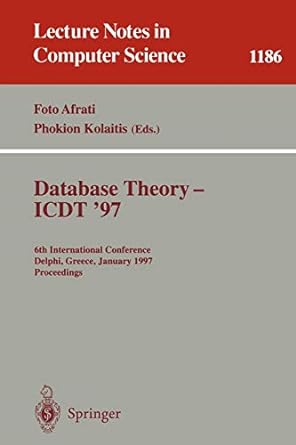Question
Make a UML diagram for Lab5. Please, note that your UML diagram now should have 3 boxes : one for the parent class and one
Make a UML diagram for Lab5.
Please, note that your UML diagram now should have 3 boxes: one for the parent class and one for each derived class.

Here is the main.cpp for Lab 4
// // main.cpp // Encrypted //
#include
using namespace std;
int main(int argc, const char * argv[]) {
const int MAX_TEXT = 1000; string filename; cout > filename;
Encrypted message (filename, MAX_TEXT); if (message.isEmpty()) { cerr LAB 5 - Abstract Class Encryption In this lab you will restructure and extend Lab 4 in order to have multiple encryption algorithms. You will create an abstract class with a pure virtual function decode which will be implemented in two different derived classes. One of them will have the algorithm that you already implemented in Lab 4. The second one is explained in STEP 3 STEP 1: Make the Encrypted class created for Lab 1 abstract. For a class to be abstract it needs to have a pure virtual function. Make decode a pure virtual function in that class (refer to textbook 15.7 Abstract Base Classes and Pure Virtual Functions). Keep everything that you already have in the Encrypted class except the implementation (body) of decode and any member variables used in the decoding process. Those need to be moved to the derived class where the decoding will now take place. Variables left in the base class that you may need to access in the derived classes need to be protected instead of private STEP 2: Create another header file "CypherAh" with class CypherA derived from Encrypted. Don't forget to #include Encrypted.h" in the new header file. Move the decode function that you implemented on Lab 4 here. This class should have: member function decode and any member variables needed in the decoding process constructor (refer to textbook 15.3 Constructors and Destructors in Base and Derived Classes and Passing Arguments to Base Class Constructors) and destructor. STEP 3: Create another header file Cypher&h with class CypherB derived from Encrypted. Don't forget to #include Encrypted.h". Implement another version of decode using an algorithm known as "rotational cypher". In this encryption method, a key is added to each letter of the original text. For example Cleartext: A P P LE 4 E T TP I Ciphertext: In order to decode, you need to subtract 4. Implement the member functions in CypherA and CypherB inline STEP 4: Now in main.cpp you cannot create objects of Encrypted anymore because you made it abstract and you cannot instantiate objects of abstract classes. Change main.cpp to create objects of CypherA and CypherB instead. You need to #include "CypherAh" and "CypherB.h" instead of "Encrypted.h" in main.cpp. Note that you can still call print and isEmpty on the objects of CypherA and CypherB, even though they belong to Encrypted, because CypherA and CypherB inherit all protected and public members from Encrypted Turn in Encrypted.cpp, Encrypted.h, CypherA.h and CypherB.h
Step by Step Solution
There are 3 Steps involved in it
Step: 1

Get Instant Access to Expert-Tailored Solutions
See step-by-step solutions with expert insights and AI powered tools for academic success
Step: 2

Step: 3

Ace Your Homework with AI
Get the answers you need in no time with our AI-driven, step-by-step assistance
Get Started


